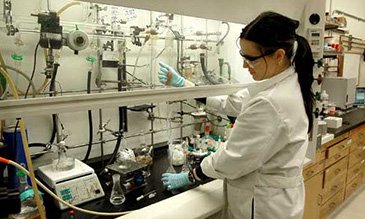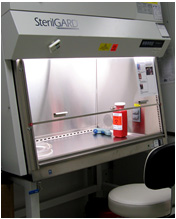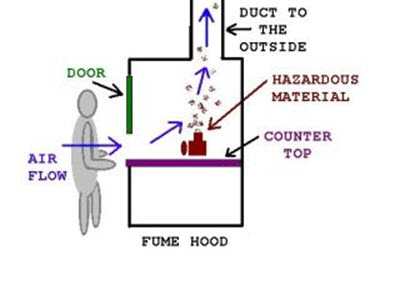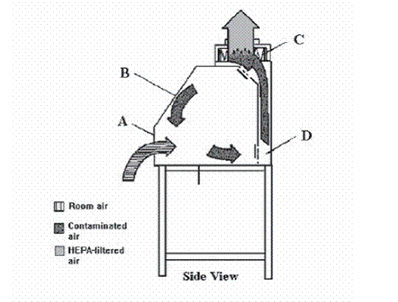Both chemical fume hoods and biosafety cabinets are specialized types of laboratory equipment. While chemical fume hoods and biosafety cabinets look similar and both protect laboratory workers from laboratory hazards - their purpose, function, and operation differ significantly.
A chemical fume hood is designed to remove chemical fumes and aerosols from the work area while a biosafety cabinet is designed to provide both a clean work environment and protection for employees who create aerosols when working with infectious agents or toxins.
Chemical Fume Hood
 |
Biosafety Cabinet
 |
A chemical fume hood protects the user while a biosafety cabinet protects the user, the environment, and the material. Biosafety cabinets have high-efficiency particulate air (HEPA) filters while chemical fume hoods do not. The HEPA filter in the exhaust system of a biosafety cabinet will effectively trap all known infectious agents and ensure that only microbe-free exhaust air is discharged from the cabinet (i.e., 99.97% of particles 0.3 µm in diameter and 99.99% of particles of greater or smaller size).
The images below show basic examples of the airflow design for the two types of cabinets.
Chemical Fume Hood
Source: USDA ARS
 |
Biosafety Cabinet
Source: LBL
 |
The chart below characterizes the differences between a chemical fume hood and a biosafety cabinet.
Additional Resources
For more information on chemical fume hoods see:
For more information on biosafety cabinets see:
